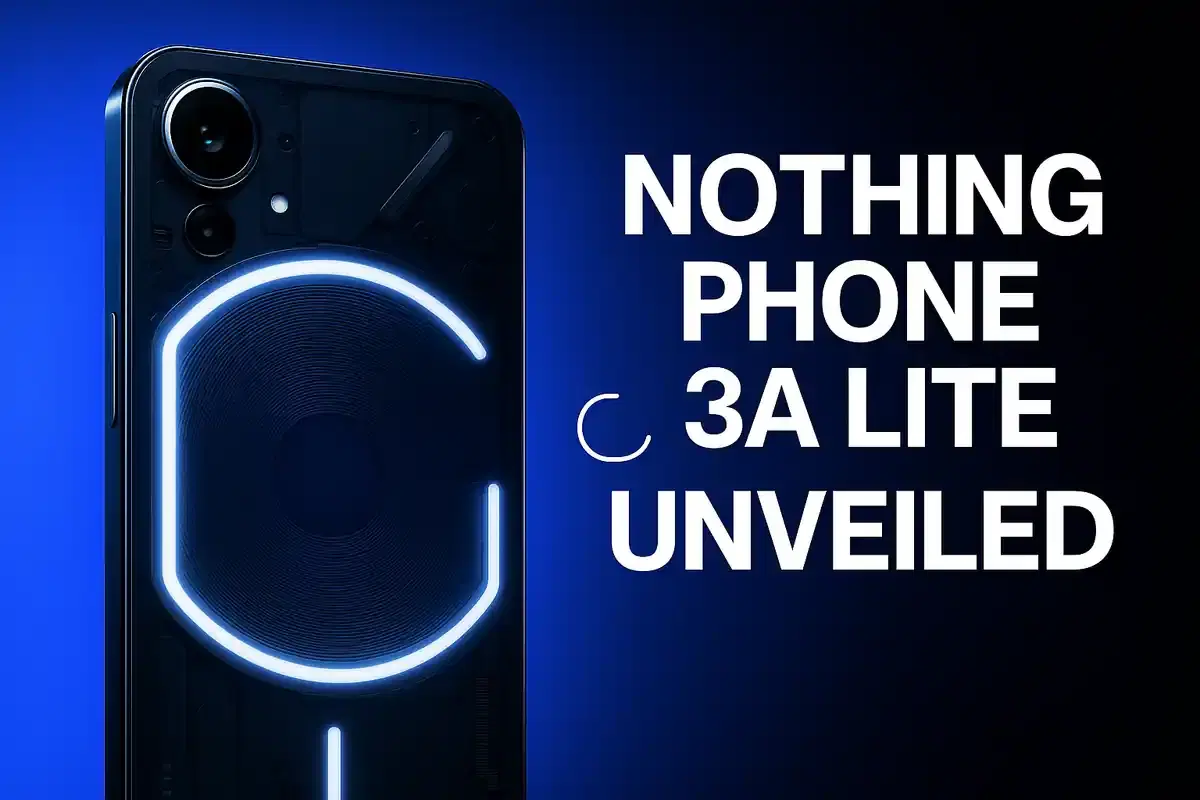Nothing Phone (3a) Lite Debuts with Signature Design, Simplified Glyph Light, and Competitive Specs for Budget Segment
Tech
|
29th October 2025, 1:35 PM

▶
Short Description :
Detailed Coverage :
The newly launched Nothing Phone (3a) Lite aims to bring Nothing's distinct design philosophy to a more accessible price point. While it echoes the premium feel of its flagship counterparts with a transparent glass back, it simplifies the iconic Glyph Interface, now featuring a single 'Glyph Light' in one corner for notifications and ringtones. This move signals a potential shift in the brand's design approach.
On the hardware front, the device sports a 6.77-inch FHD+ AMOLED display boasting a 120Hz adaptive refresh rate and up to 3,000 nits peak brightness for excellent outdoor visibility. It is powered by the MediaTek Dimensity 7300 Pro 5G chipset, coupled with up to 16GB of combined RAM and 256GB of internal storage, expandable via microSD. A 5,000mAh battery supports 33W fast charging and 5W reverse wired charging.
For photography, it features a 50MP Samsung main camera, an 8MP ultra-wide lens, and a 16MP front camera. The phone runs on Android 15-based Nothing OS 3.5 and promises three years of major OS updates and six years of security patches.
Launching first in Europe at €249, an India launch is anticipated soon, potentially at a similar price point. Its specifications are comparable to CMF by Nothing's Phone 2 Pro, making design the primary differentiator.
Impact: This launch introduces a new competitor in the budget smartphone segment in India, potentially affecting market dynamics for similar devices. Its success will depend on pricing and consumer reception to the simplified Glyph feature. It is moderately significant for investors tracking the consumer electronics sector. Rating: 5/10
Difficult Terms: Glyph Interface: A signature feature of Nothing phones, consisting of a series of LED lights on the back that illuminate for notifications, calls, and other alerts in various patterns. AMOLED display: A type of display technology where each pixel emits its own light, allowing for deeper blacks and vibrant colors. Adaptive refresh rate: A display technology that automatically adjusts the screen's refresh rate (how many times per second the image is updated) based on the content being viewed, saving power and providing smoother visuals. Nits: A unit of luminance used to measure the brightness of displays. Panda Glass: A type of strengthened glass used for displays, designed to be more resistant to scratches and impacts. IP54 rating: A dust and water resistance rating. IP54 means the device is protected against dust ingress (limited protection) and splashes of water from any direction. MediaTek Dimensity 7300 Pro: A specific model of a mobile processor (System on Chip) manufactured by MediaTek, designed for mid-range smartphones, supporting 5G connectivity. RAM Booster: A feature that allows the phone to utilize storage space as virtual RAM to improve multitasking performance. Reverse wired charging: The ability of a device to charge another device through a wired connection, essentially acting as a power bank. Samsung main sensor: Refers to the primary camera sensor manufactured by Samsung Electronics, known for its image quality. Nothing OS 3.5: The proprietary operating system developed by Nothing, based on Android. Security patches: Software updates released to fix vulnerabilities and protect the device from security threats.